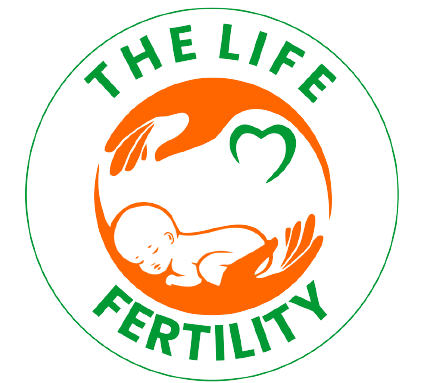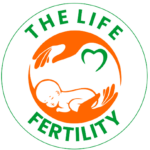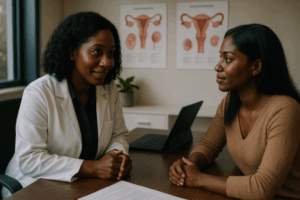Understanding the Biological Clock and Fertility
The concept of the “biological clock” is a straightforward way to describe how the ability to conceive naturally changes over time for both women and men. For women, this primarily revolves around their finite supply of eggs. Unlike men, who continuously produce sperm, women are born with all the eggs they will ever have, and both the quantity and, critically, the quality of these eggs naturally decline with age and fertility. This decline becomes more pronounced in the mid-30s.
Men also experience a biological clock, though its impact on age and fertility is generally more gradual. From around their 40s, there can be a subtle decrease in sperm quality, including motility (their ability to move) and morphology (their shape), as well as a reduction in sperm count.
Understanding these natural shifts related to age and fertility is fundamental for anyone thinking about starting or expanding their family. It’s not about a sudden stop at a specific age, but rather a gradual shift in the odds of conceiving. Recognizing this reality allows for proactive planning and exploration of available fertility options when needed.
Debunking the myth that fertility remains constant until a certain arbitrary age is a key aspect of understanding the true relationship between age and fertility.
How Age Impacts Female Fertility: A Closer Look
The impact of age on female fertility is multifaceted. One of the most significant factors is the decline in ovarian reserve. Women are born with a set number of eggs, and this number steadily diminishes throughout their lives. As a woman ages, not only are there fewer eggs available, but the reduction in egg quality also becomes a major concern.
Older eggs have a higher likelihood of chromosomal abnormalities, which can lead to difficulties in fertilization, implantation failure, and an increased risk of miscarriage – all key aspects of the connection between age and fertility.
Furthermore, the menstrual cycle itself can change with age and fertility. Cycles may become shorter or longer, and ovulation might become less predictable, making it harder to pinpoint the fertile window. Hormonal fluctuations also play a role. Beyond the eggs themselves, the overall reproductive environment can be affected by age and fertility.
There’s an increased risk of developing conditions like fibroids or endometriosis, which can impact fertility. Additionally, pregnancies in women of advanced maternal age and fertility carry a higher risk of complications such as gestational diabetes, hypertension, and preterm birth. The clear link between age and fertility underscores the importance of considering these factors when planning for a family.
Recognizing the Signs: When to Seek Fertility Help
Understanding the interplay of age and fertility naturally leads to the question of when professional help might be necessary. There are general guidelines based on age and the duration of trying to conceive. For women under 35, it’s typically recommended to seek advice from a fertility specialist if pregnancy hasn’t occurred after one year of regular, unprotected intercourse.
However, when age and fertility are a more significant factor, such as for women aged 35 and over, the timeframe for seeking help is generally shorter – around six months of trying.
Beyond age, certain other signs warrant earlier consultation. Individuals with known fertility risk factors, such as Polycystic Ovary Syndrome (PCOS), endometriosis, or a history of pelvic inflammatory disease, should consider seeking guidance sooner rather than later.
Similarly, any known male factor issues or symptoms like irregular menstrual cycles, significant pelvic pain, or a history of sexually transmitted infections should prompt a fertility evaluation. Recognizing these indicators, in the context of age and fertility, is crucial for proactive management.
Early intervention often leads to a wider range of fertility options and potentially better outcomes. The initial steps in a fertility assessment usually involve a thorough medical history, a physical examination, and some basic fertility tests for both partners.
Exploring Fertility Treatment Options When Age is a Factor
When concerns about age and fertility arise, a range of fertility treatment options are available. The most suitable approach often depends on the specific circumstances, including the impact of age on conception for both partners.
Intrauterine Insemination (IUI) is a procedure where prepared sperm is directly placed into the uterus around the time of ovulation. While IUI can be effective for certain fertility issues, its success rates are generally lower for women of advanced maternal age and fertility due to the underlying decline in egg quality.
In Vitro Fertilization (IVF) is a more involved process that can often overcome some of the challenges associated with age and fertility. IVF involves stimulating the ovaries to produce multiple eggs, retrieving these eggs, fertilizing them with sperm in a laboratory, and then transferring one or more embryos into the uterus.
IVF can be particularly beneficial when the impact of age on fertility includes diminished ovarian reserve or decreased egg quality. Preimplantation Genetic Testing (PGT-A/PGT-M) can also be used in conjunction with IVF to screen embryos for chromosomal abnormalities, which are more common in older eggs.
For individuals or couples where the effects of age on fertility are significant, using donor eggs, donor sperm, or donor embryos can be a viable option. These options can significantly increase the chances of pregnancy when the individual’s own gametes have been affected by age and fertility.
Other treatments might include ovulation induction with medications to help stimulate egg production, although the effectiveness of this can also be influenced by age and fertility. Surgical interventions might be considered in some cases to address underlying structural issues that could be contributing to fertility decline with age. Understanding the various fertility treatment pathways and how they relate to age and fertility is essential for making informed decisions.
Proactive Steps: Preserving Fertility with Age in Mind
Given the clear link between age and fertility, proactive steps to preserve fertility can be an important consideration for individuals who are not ready to start a family now but wish to have options in the future. Egg freezing, or oocyte cryopreservation, is a process where a woman’s eggs are retrieved and frozen for potential use later.
The ideal time to consider egg freezing is generally in the late 20s to early 30s, as egg quality is typically higher at this age and fertility window. While not a guarantee of future pregnancy, freezing younger, healthier eggs can significantly improve the chances of success compared to trying to conceive with older eggs.
Similarly, embryo freezing (embryo cryopreservation) is an option for couples who are not planning to have children immediately. This involves undergoing an IVF cycle and freezing fertilized embryos. For some, embryo freezing might offer slightly higher success rates per transfer compared to egg freezing, as it confirms fertilization has occurred.
For men, sperm freezing (sperm cryopreservation) is a well-established procedure, particularly relevant for those facing medical treatments that could impact their male fertility and age or for those planning to delay fatherhood. It’s important to understand that while these fertility preservation methods can be valuable tools, they do not halt the natural aging process and its eventual impact on the reproductive system.
The decision to pursue fertility preservation should be made after careful consideration and consultation with a fertility specialist to understand the potential benefits and limitations in the context of age and fertility.
Lifestyle’s Influence on Fertility Across All Ages
While age and fertility are primary drivers of reproductive potential, lifestyle choices can also play a significant role at any age. Maintaining a healthy body weight is crucial, as both being overweight and underweight can disrupt hormonal balance and affect ovulation in women and sperm production in men, impacting overall age and fertility.
A balanced and nutritious diet, rich in fruits, vegetables, and whole grains, provides the necessary nutrients for reproductive health. Regular physical activity is also beneficial, but excessive strenuous exercise can sometimes negatively affect ovulation.
Managing stress levels is important, as chronic stress can interfere with hormone regulation. Avoiding smoking and excessive alcohol consumption is strongly recommended, as these habits have been linked to decreased fertility in both men and women, regardless of their age and fertility status.
Limiting caffeine intake is often advised as well. It’s important to remember that while these lifestyle factors and boosting natural fertility can support overall reproductive health, they cannot reverse the natural decline in fertility decline by age or overcome underlying medical conditions that may be affecting age and fertility.
Emotional Well-being and Navigating Age-Related Fertility Concerns
It’s crucial to acknowledge the emotional toll that concerns about age and fertility can take. The pressure of the “biological clock,” the disappointment of unsuccessful attempts to conceive, and the complexities of exploring fertility options can lead to significant stress, anxiety, and even depression.
It’s essential to prioritize emotional well-being throughout this journey. Seeking support from partners, family, and friends is vital. Many fertility clinics offer counseling services or can connect individuals and couples with support groups to help navigate the emotional challenges of age and fertility.
Conclusion
Understanding the complex relationship between age and fertility is essential for informed family planning. By carefully considering fertility options and seeking timely guidance, individuals and couples can navigate their fertility journey with increased knowledge and empowerment.
At what age does female fertility significantly decline?
Female fertility typically starts to gradually decline in the late 20s and early 30s, with a more noticeable decline after the mid-30s due to changes in egg quality and quantity related to age and fertility.
Are there tests to assess the impact of age on my fertility?
Yes, tests like Anti-Mullerian Hormone (AMH) and antral follicle count can provide insights into ovarian reserve, while sperm analysis assesses male fertility parameters relevant to age and fertility.
Is egg freezing a guaranteed way to have a baby later in life?
Egg freezing preserves eggs at a younger age and fertility point, potentially increasing the chances of future pregnancy, but it is not a guarantee of a successful pregnancy.
Can lifestyle changes reverse the impact of age on fertility?
While healthy lifestyle choices can optimize overall fertility at any age and fertility stage, they cannot reverse the natural decline in egg quality and quantity associated with increasing age.
When should a couple start worrying about age and fertility?
Couples should be mindful of the impact of age and fertility when planning their family. Seeking advice earlier rather than later, especially for women over 35, is generally recommended.
What fertility treatments are most effective for women of advanced maternal age?
IVF is often recommended for women of advanced maternal age and fertility as it can bypass some natural conception barriers. Donor eggs may also be a highly effective option.
If I’m over 40, are my chances of conceiving naturally zero?
No, it’s still possible to conceive naturally over 40, but the chances are significantly lower compared to younger age and fertility ranges. Seeking fertility advice is recommended.
How does male age affect fertility?
While the decline is more gradual than in women, increasing male age and fertility can lead to lower sperm quality, quantity, and motility, potentially increasing time to conception and miscarriage risk.




